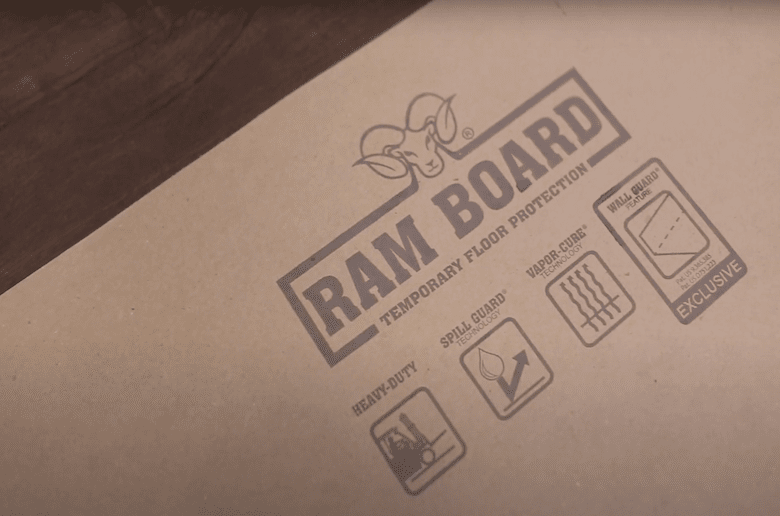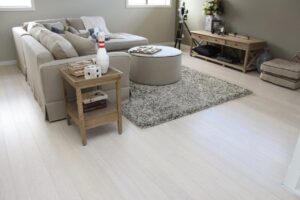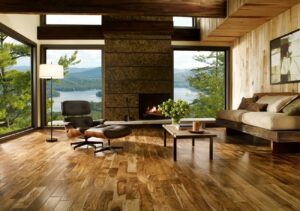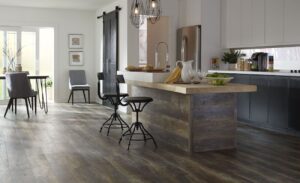Floor protection during construction and remodeling isn’t merely a convenience—it’s a necessity. Scratches, spills, and stains turn new surfaces old before their time, driving the need for reliable products like X-Board vs RAM Board.
As we unveil the characteristics and benefits of each, we set the stage for a head-to-head comparison. Selecting the right floor protection material is crucial; it safeguards investment, ensures project success, and upholds professional standards.
Our discussion will dissect these two prominent brands to assist you in making an informed decision. With different features, benefits, and applications, the decision between X-Board and RAM Board can significantly impact the outcome of your flooring project.
Key Features of X-Board and RAM Board
Understanding the distinct features of X-Board vs RAM Board reveals why each might be the protector of choice for your floors.
Introduction to X-Board’s Unique Qualities
X-Board by Trimaco brings a notable set of attributes to the table. Its core benefit lies in its innovative Spill Block technology, which ensures that liquids don’t seep through and damage the surfaces underneath.
Coupled with its breathability, X-Board allows for surface curing—a significant advantage when working with materials that need to outgas or cure over time.
These features make X-Board a strong candidate for those seeking efficient protection.
- Spill Block Technology: Liquid repellence to prevent damage from spills.
- Breathability: Allows for curing of the surface beneath without lifting the board.
- Recyclability: Echoes the growing demand for environmentally responsible materials.
The Technological Edge of RAM Board
On the other side, RAM Board steps up the game with its own proprietary technologies.
The standard RAM Board is already 4.5 times thicker than traditional builder’s paper, but it’s the inclusion of Spill Guard and Vapor-Cure technologies, along with Flex-Fiber and Wall Guard features, that truly set it apart.
These advancements provide superior protection against spills and impacts, and the exclusive Wall Guard feature adds an extra layer of defense for adjoining surfaces.
- Spill Guard: Advanced protection to keep liquids at bay.
- Vapor-Cure Technology: Allows floors to cure while staying protected.
- Flex-Fiber Technology: Adds durability and impact resistance.
- Wall Guard Feature: Protects adjacent walls from potential damage.
How Thickness and Durability Matter
Thickness and durability are the linchpins of effective floor protection.
X-Board’s 2.5 times increased thickness over builder’s paper grants it an impressive resilience, while RAM Board’s additional heft positions it as a robust contender for heavier-duty applications.
- X-Board: Ideal for moderate traffic and general use.
- RAM Board: Tailored for high-impact environments and heavy foot traffic.
The Eco-Friendly Aspect of Floor Protection Materials
Both X-Board and RAM Board align with modern ecological standards by being recyclable.
The ability to reuse these materials speaks volumes about their long-term value and the brands’ commitment to sustainable practices.
For businesses and consumers with a green conscience, the environmental footprint of their floor protection choice is as important as the protection it provides.
Important Note: Reusability of floor protection products contributes significantly to reducing waste, making both X-Board and RAM Board commendable choices for eco-minded projects.
By weighing these key features against the demands of your specific project, one can discern the most suitable option, whether it be the versatile X-Board or the heavy-duty RAM Board.
Key Differences Between X-Board and RAM Board
A deeper look into X-Board and RAM Board reveals distinct differences crucial for informed decisions.
Variants Available: Single vs Multiple Options
X-Board and RAM Board vary in the options they offer. X-Board typically comes in one standard type, focusing on consistency and reliability.
RAM Board, however, presents several variants tailored to specific needs and environments, providing a spectrum of choices for consumers.
| X-Board | RAM Board |
|---|---|
| Standard variant | Multiple options targeting different requirements |
Delving into the Exclusive Technologies
The technology integrated into each board is a defining factor.
X-Board’s Spill Block technology sets a high standard for liquid protection, whereas RAM Board’s Spill Guard and Vapor-Cure technologies cater to a range of protective needs, from moisture control to impact resistance.
- X-Board: Spill Block technology for liquid protection.
- RAM Board: Spill Guard and Vapor-Cure technologies for a more comprehensive defense.
Size and Coverage: Comparing the Numbers
Size and coverage are practical considerations.
Here, we compare their dimensions and the total area they can cover, providing a clear picture for those planning large-scale projects.
| Feature | X-Board | RAM Board |
|---|---|---|
| Roll Size | Standard rolls | Larger rolls |
| Coverage | Sufficient for smaller areas | Designed for larger projects |
Usage and Application Areas of Both Boards
Each board has its realm of applications. X-Board’s design suits it well for light to medium-duty tasks, whereas RAM Board’s robust build is ideal for heavy-duty work and high-traffic areas.
The choice depends on the project’s nature and the expected footfall.
- X-Board: Best for residential projects or areas with less frequent traffic.
- RAM Board: The go-to for commercial sites and areas with heavy machinery or footfall.
Important Note: The specific needs of your project should guide the selection between X-Board and RAM Board to ensure optimal floor protection.
By considering these differences, one can align their choice with the project’s specific needs, be it the uniform protection offered by X-Board or the customizable solutions from RAM Board.
Which is Better? X-Board or RAM Board
We weigh the merits of X-Board vs RAM Board, considering varied applications and environmental impacts.
Analyzing Suitability for Floors and Walls
Both X-Board and RAM Board offer excellent floor protection, but their suitability differs based on surface and application.
For wall protection, X-Board’s lighter weight and flexibility make it easier to handle and install, while RAM Board’s tougher construction provides stronger resistance against impacts.
- X-Board: Preferred for ease of installation on walls.
- RAM Board: Optimal for heavy-duty floor protection.
Recyclability and Environmental Impact
The environmental impact of our choices is more critical than ever.
Both boards are recyclable, but X-Board boasts a composition that is more readily biodegradable.
| Factor | X-Board | RAM Board |
|---|---|---|
| Recyclability | 100% Recyclable | 100% Recyclable |
| Biodegradability | Higher biodegradable content | Standard |
Assessing the Value for Investment
When it comes to value, it’s essential to look beyond the price tag.
X-Board is generally more cost-effective for residential projects, while RAM Board, with its added durability, offers better long-term value for commercial applications, especially when considering its reuse potential.
- Cost-effectiveness for residential use: X-Board.
- Long-term value for commercial use: RAM Board.
Final Recommendations Based on Use Cases
Our final recommendation is contingent upon the specifics of the project.
For residential or light commercial projects where budget and ease of use are paramount, X-Board emerges as the clear winner. Conversely, for high-traffic areas or sites requiring robust protection, RAM Board is the preferable choice.
Important Note: Always align the floor protection material choice with the specific conditions and requirements of your project to ensure the best outcome.
Through careful consideration of these factors, we can pinpoint the more suitable option for a given situation, whether it’s the cost-effectiveness and ease of use offered by X-Board or the heavy-duty protection afforded by RAM Board.
Conclusion
In our examination of X-Board vs RAM Board, we have uncovered the unique features that each brings to the table.
The decision-making process is heavily influenced by these features, which range from environmental impact to durability and cost-effectiveness. Innovation in flooring protection has proven to be pivotal in both products, each leading the way with their respective strengths.
Ultimately, the selection rests on the specific demands of the construction project, with a keen eye on sustainability. We must prioritize smart building practices that align with our environmental responsibilities, choosing materials that not only protect our sites but also our planet.





